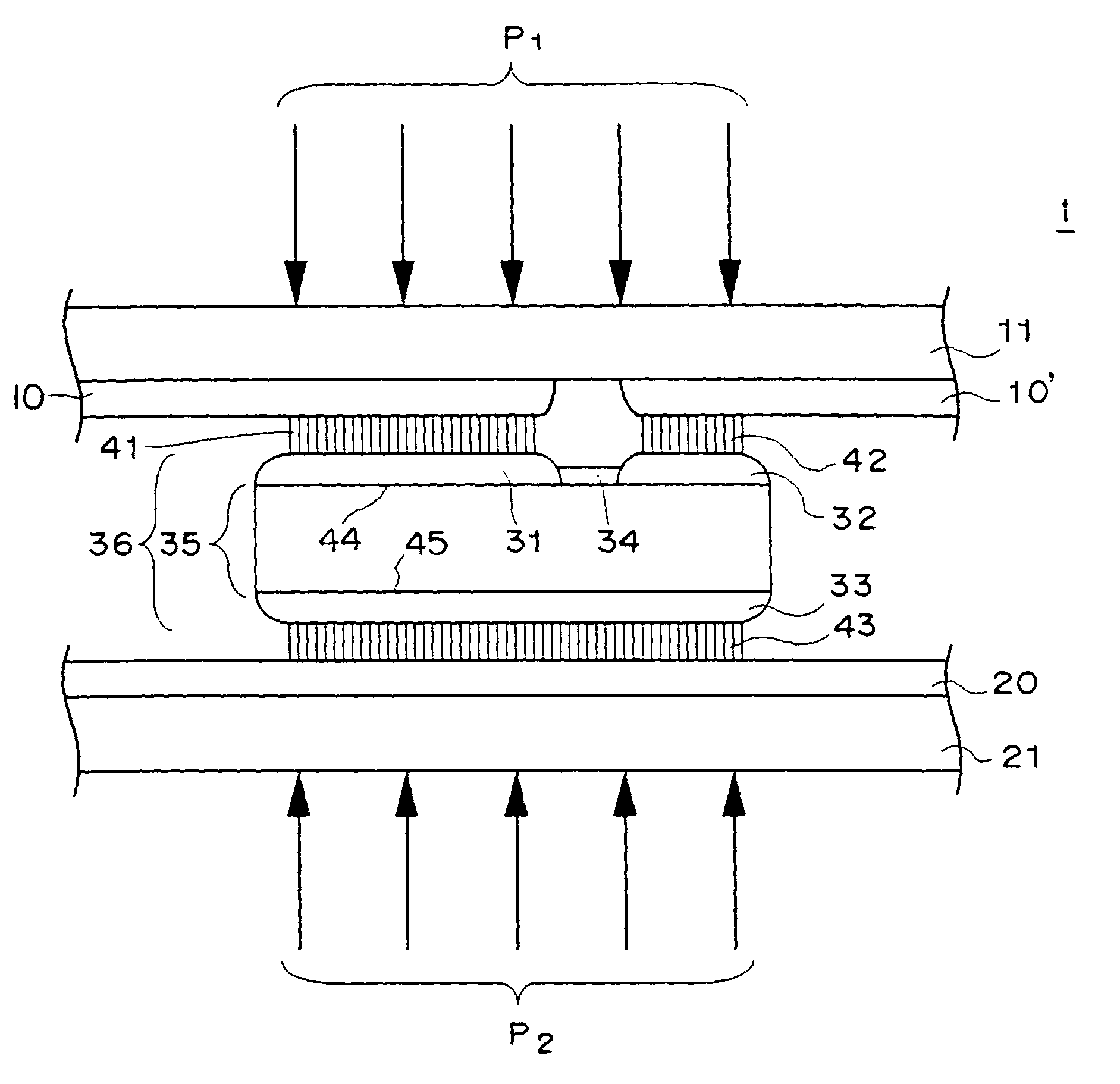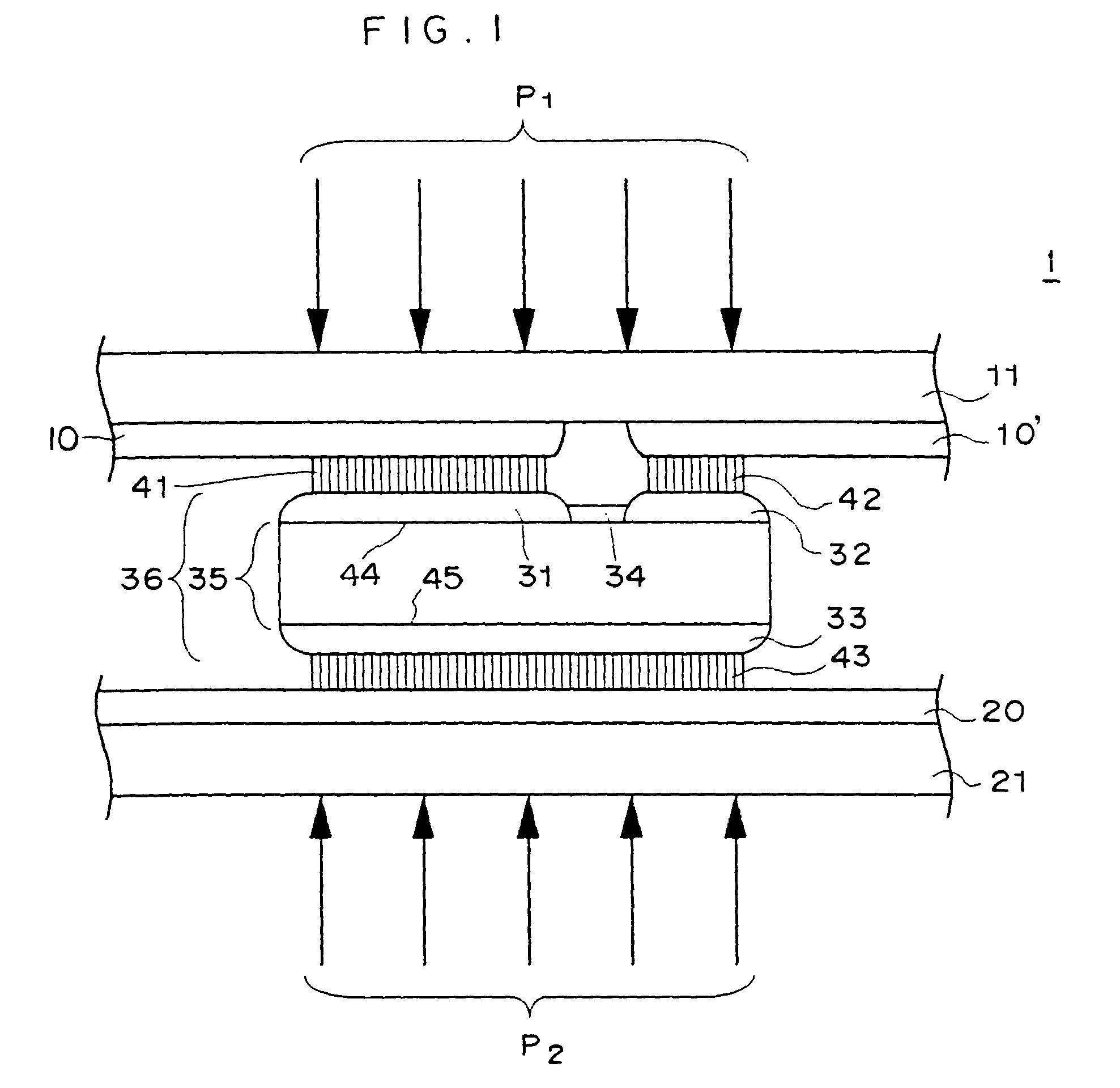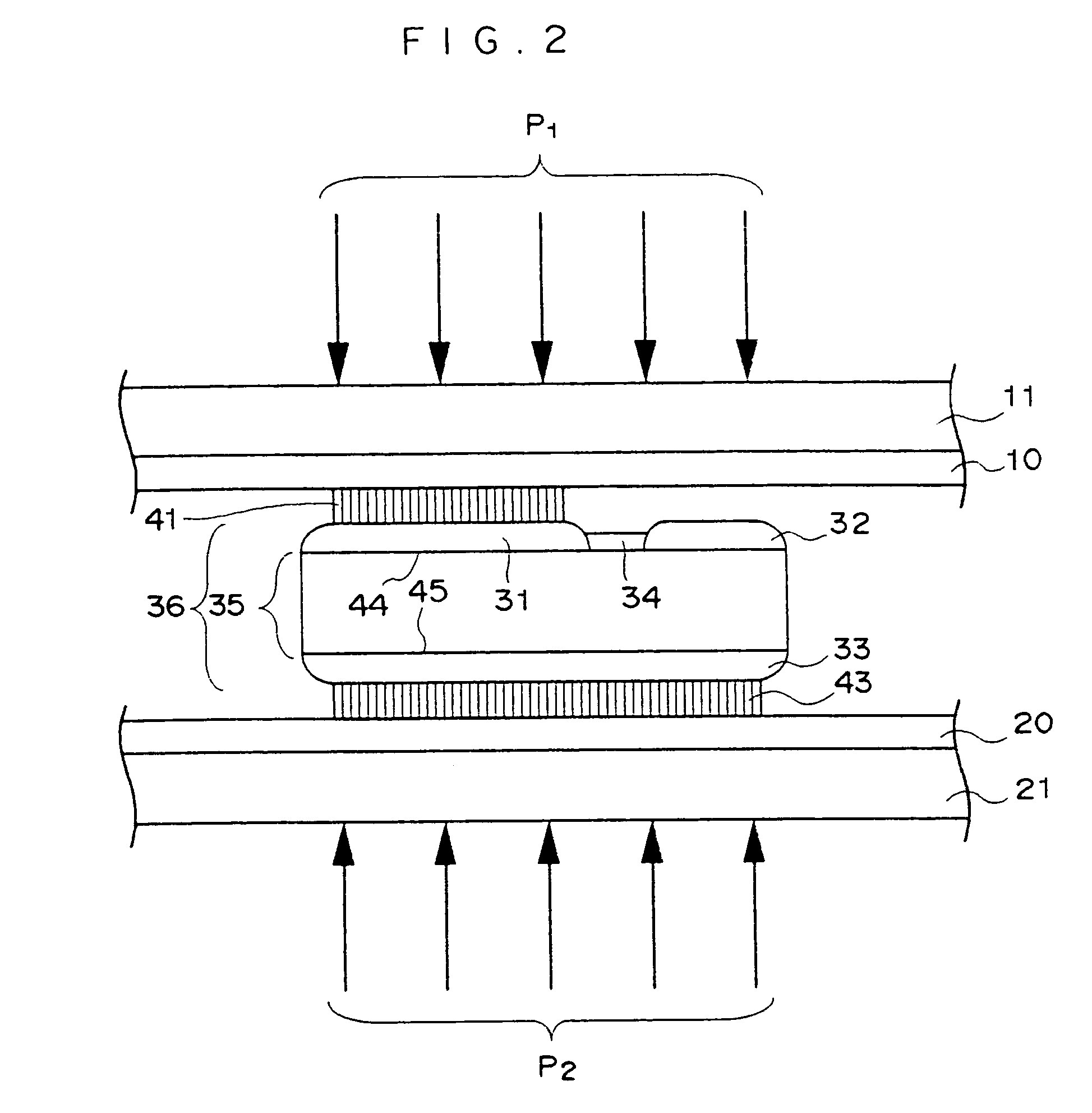Pressure-welded semiconductor device
a semiconductor device and pressure welding technology, applied in the direction of emergency protective circuit arrangement, nanostructure manufacturing, electrical apparatus construction details, etc., can solve the problems of insufficient performance of pressure-welded semiconductor devices, difficult diffusion of heat generated in semiconductor elements, and large electrical resistance between element-side electrodes and casing-side electrodes
- Summary
- Abstract
- Description
- Claims
- Application Information
AI Technical Summary
Benefits of technology
Problems solved by technology
Method used
Image
Examples
example 1
[0165]For the pressure-welded semiconductor device of Example 1, the semiconductor element 36′ shown in FIG. 4 manufactured by the above-described procedure was used to manufacture a pressure-welded semiconductor device where the pressure-welded portions between the semiconductor element and the casing had the configuration shown in FIG. 1.
[0166]The formation of the buffer conductive layers and the manufacture of the pressure-welded semiconductor device were conducted by the procedures described below.
Formation of the Buffer Conductive Layers
[0167]The semiconductor element 36′ was immersed for 10 seconds in an aqueous solution of sulfuric acid (10% by weight) in order to remove oxides from the surface of the emitter electrode 31 and the surfaces of the gate electrode 32 and the collector electrode 33. After the immersed semiconductor element 36′ was sufficiently rinsed and dried, the semiconductor element 36′ was placed in a reactor of an in-house manufactured CVD machine and air wa...
example 2
[0172]For the pressure-welded semiconductor device of Example 2, the semiconductor element 36′ shown in FIG. 4 manufactured by the above-described procedure was used to manufacture a pressure-welded semiconductor device where the pressure-welded portions between the semiconductor element and the casing had the configuration shown in FIG. 2.
[0173]The formation of the buffer conductive layers and the manufacture of the pressure-welded semiconductor device were conducted by the procedures described below.
Formation of the Buffer Conductive Layers
[0174]Using the semiconductor element 36′ where the surface of the gate electrode 32 was protected in advance with a resist, the semiconductor element 36′ was immersed for 10 seconds in an aqueous solution of sulfuric acid (10% by weight) in order to remove oxides from the surface of the emitter electrode 31 and the surfaces of the gate electrode 32 and the collector electrode 33. After the immersed semiconductor element 36′ was sufficiently rin...
example 3
[0182]For the pressure-welded semiconductor device of Example 3, the semiconductor element 36′ shown in FIG. 4 manufactured by the above-described procedure was used to manufacture a pressure-welded semiconductor device where the pressure-welded portions between the semiconductor element and the casing had the configuration shown in FIG. 1.
Formation of the Buffer Conductive Layers
[0183]The buffer conductive layers were manufactured in the same manner as the above Example 1.
Filling of the Carbon Nanotube Gaps with Metal
[0184]A wafer in which a film of carbon nanotubes was formed was immersed in diluted sulfuric acid, the nickel oxide films on the emitter electrode 31, the gate electrode 32 and the collector electrode 33, which were nickel electrodes, were removed and the metal nickel was exposed. Next, the wafer was immersed in a plating solution including nickel sulfate, lactic acid and sodium hypophosphate, and electroless nickel plating was conducted. Ni grew on the emitter electr...
PUM
 Login to View More
Login to View More Abstract
Description
Claims
Application Information
 Login to View More
Login to View More - R&D
- Intellectual Property
- Life Sciences
- Materials
- Tech Scout
- Unparalleled Data Quality
- Higher Quality Content
- 60% Fewer Hallucinations
Browse by: Latest US Patents, China's latest patents, Technical Efficacy Thesaurus, Application Domain, Technology Topic, Popular Technical Reports.
© 2025 PatSnap. All rights reserved.Legal|Privacy policy|Modern Slavery Act Transparency Statement|Sitemap|About US| Contact US: help@patsnap.com



